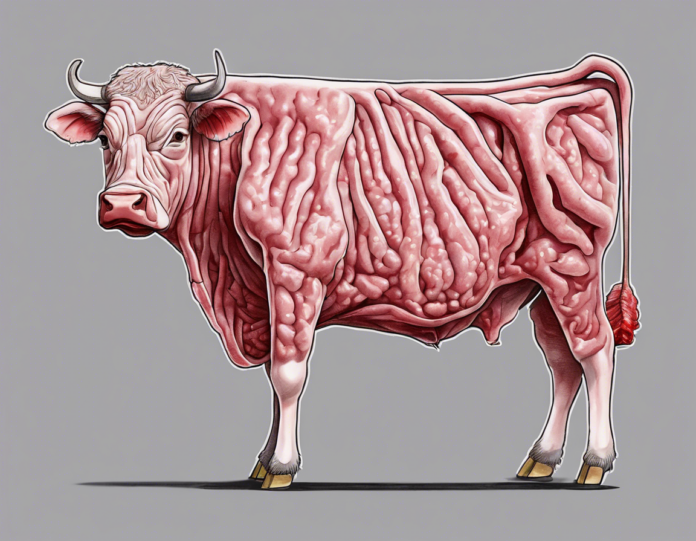Wagyu beef is often hailed as one of the finest and most luxurious types of meat available in the culinary world today. Known for its exceptional marbling, tenderness, and flavor, this Japanese delicacy has gained international acclaim among chefs and food connoisseurs alike. In this article, we will delve into the origins of Wagyu beef, its unique characteristics, the various types of Wagyu strains, and how to appreciate this delicacy to the fullest.
The Origins of Wagyu Beef
Wagyu, which translates to “Japanese cow,” has a rich history dating back over 2,000 years in Japan. The rigorous breeding practices and strict regulations surrounding Wagyu cattle have contributed to the exceptional quality of the meat. These cattle were originally used as working animals in agriculture, and their genetic predisposition towards marbling evolved over time, resulting in the highly prized meat that is now synonymous with Wagyu beef.
Characteristics of Wagyu Beef
1. Marbling
Perhaps the most distinctive characteristic of Wagyu beef is its abundant marbling – the intramuscular fat that gives the meat its signature buttery texture and rich flavor. The intricate web of fat throughout the meat melts during cooking, creating a juicy and succulent dining experience.
2. Tenderness
Due to the high percentage of unsaturated fats present in Wagyu beef, the meat has a lower melting point, resulting in a buttery texture that practically melts in your mouth. This tenderness is unmatched by other types of beef.
3. Flavor
The marbling in Wagyu beef not only contributes to its tenderness but also enhances the depth of flavor. The buttery richness of the meat, combined with subtle umami notes, creates a truly indulgent culinary experience.
Types of Wagyu Strains
While Wagyu beef is often associated with the renowned Kobe beef, there are several other strains of Wagyu that are equally exceptional in quality, flavor, and marbling. Some of the most well-known Wagyu strains include:
1. Kobe
Kobe beef is perhaps the most famous and sought-after type of Wagyu. Hailing from the Hyogo Prefecture in Japan, Kobe beef is known for its unparalleled marbling and tenderness, resulting from the cattle’s specialized diet and meticulous rearing techniques.
2. Matsusaka
Matsusaka beef, originating from the Mie Prefecture in Japan, is another highly regarded Wagyu strain. It is characterized by its exceptional marbling, tenderness, and umami flavor, making it a favorite among gourmet enthusiasts.
3. Hida
Hida beef comes from the Gifu Prefecture in Japan and is revered for its rich marbling, tenderness, and robust beefy flavor. The cattle are raised with great care and attention to produce meat of exceptional quality.
4. Ohmi
Ohmi beef, sourced from the Shiga Prefecture in Japan, is known for its delicate marbling and melt-in-your-mouth texture. The beef’s exquisite flavor and tenderness have earned it a top spot among Wagyu enthusiasts.
How to Appreciate Wagyu Beef
1. Cooking Techniques
Given the high marbling content of Wagyu beef, it is best enjoyed when cooked simply to allow the natural flavors to shine. Whether grilled, seared, or cooked teppanyaki-style, Wagyu beef is best served medium-rare to fully appreciate its melt-in-your-mouth texture.
2. Seasoning
A light touch is key when seasoning Wagyu beef to ensure that the delicate flavors are not overwhelmed. A sprinkle of sea salt or a simple marinade can complement the meat without masking its natural richness.
3. Pairing
When it comes to pairing Wagyu beef with beverages, opt for red wines with robust flavors such as Cabernet Sauvignon or Malbec to complement the meat’s richness. Alternatively, a crisp sake can also enhance the umami notes in Wagyu beef.
4. Presentation
To fully appreciate the exquisite marbling of Wagyu beef, consider slicing it thinly and arranging it on a plate to showcase its intricate patterns. This not only enhances the visual appeal but also allows for a more enjoyable tasting experience.
Frequently Asked Questions (FAQs)
Q: What makes Wagyu beef so special compared to other types of beef?
A: Wagyu beef stands out due to its unparalleled marbling, which results in exceptional tenderness, flavor, and richness not typically found in other types of beef.
Q: Is Wagyu beef healthier than regular beef?
A: While Wagyu beef contains higher levels of monounsaturated fats (the good fats) compared to traditional beef, it is also higher in overall fat content. Moderation is key when indulging in this delicacy.
Q: Where can I purchase authentic Wagyu beef?
A: Authentic Wagyu beef can often be found at specialty butcher shops, high-end restaurants, or through reputable online suppliers who source their meat from trusted producers.
Q: What is the best way to cook Wagyu beef at home?
A: Wagyu beef is best cooked using high heat methods such as grilling, pan-searing, or teppanyaki-style cooking. Ensure not to overcook the meat to preserve its tenderness.
Q: Are there any alternatives to Japanese Wagyu beef?
A: While Japanese Wagyu beef is considered the gold standard, other countries have started producing their own high-quality marbled beef, such as American Wagyu or Australian Wagyu, which offer similar characteristics.
In conclusion, Wagyu beef is a true culinary delight that embodies luxury and indulgence. From its rich history and exceptional characteristics to the various strains and ways to savor it, Wagyu beef continues to captivate food enthusiasts around the globe. Whether enjoyed on its own or paired with fine wines, Wagyu beef remains a top choice for those seeking a truly unforgettable dining experience.




